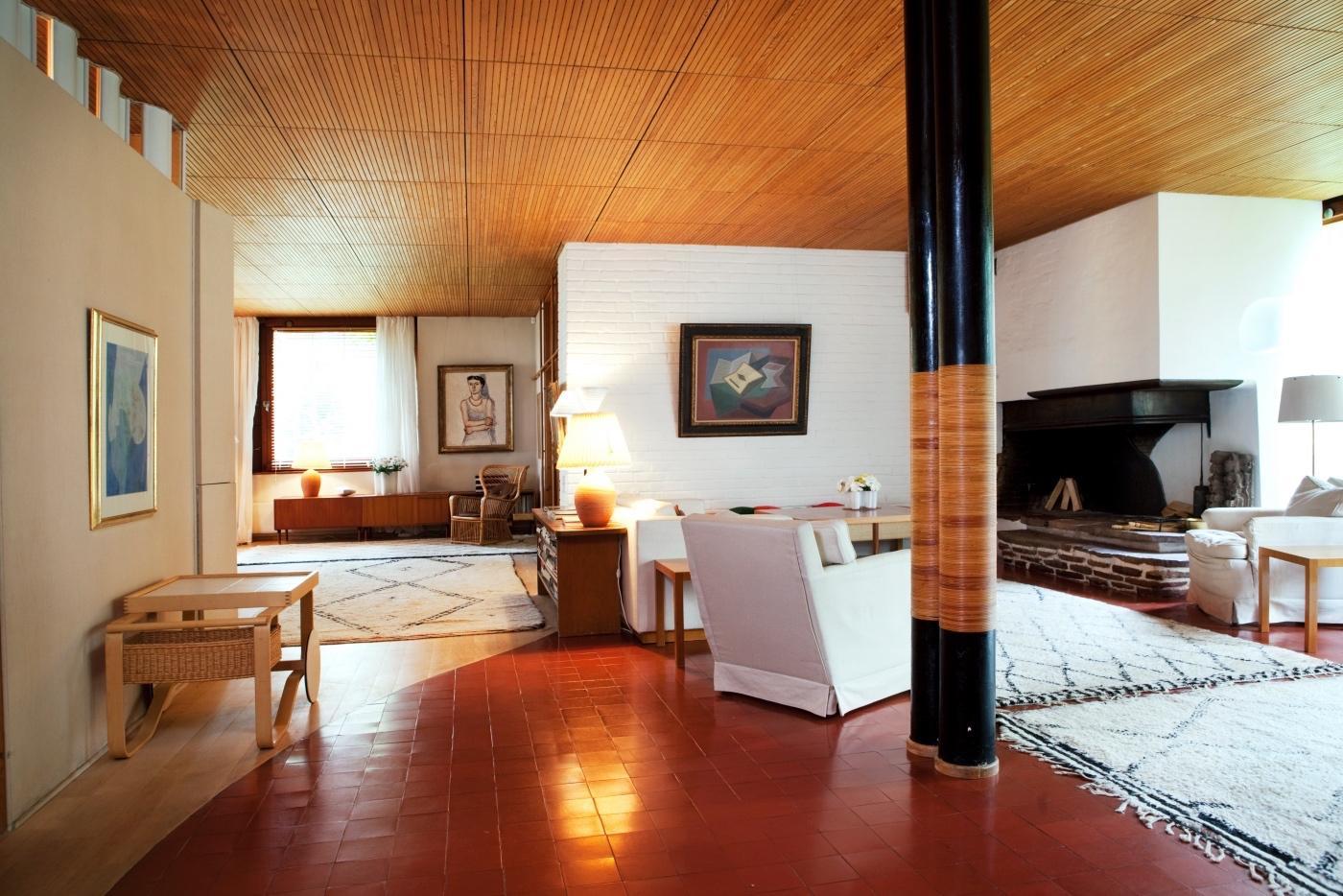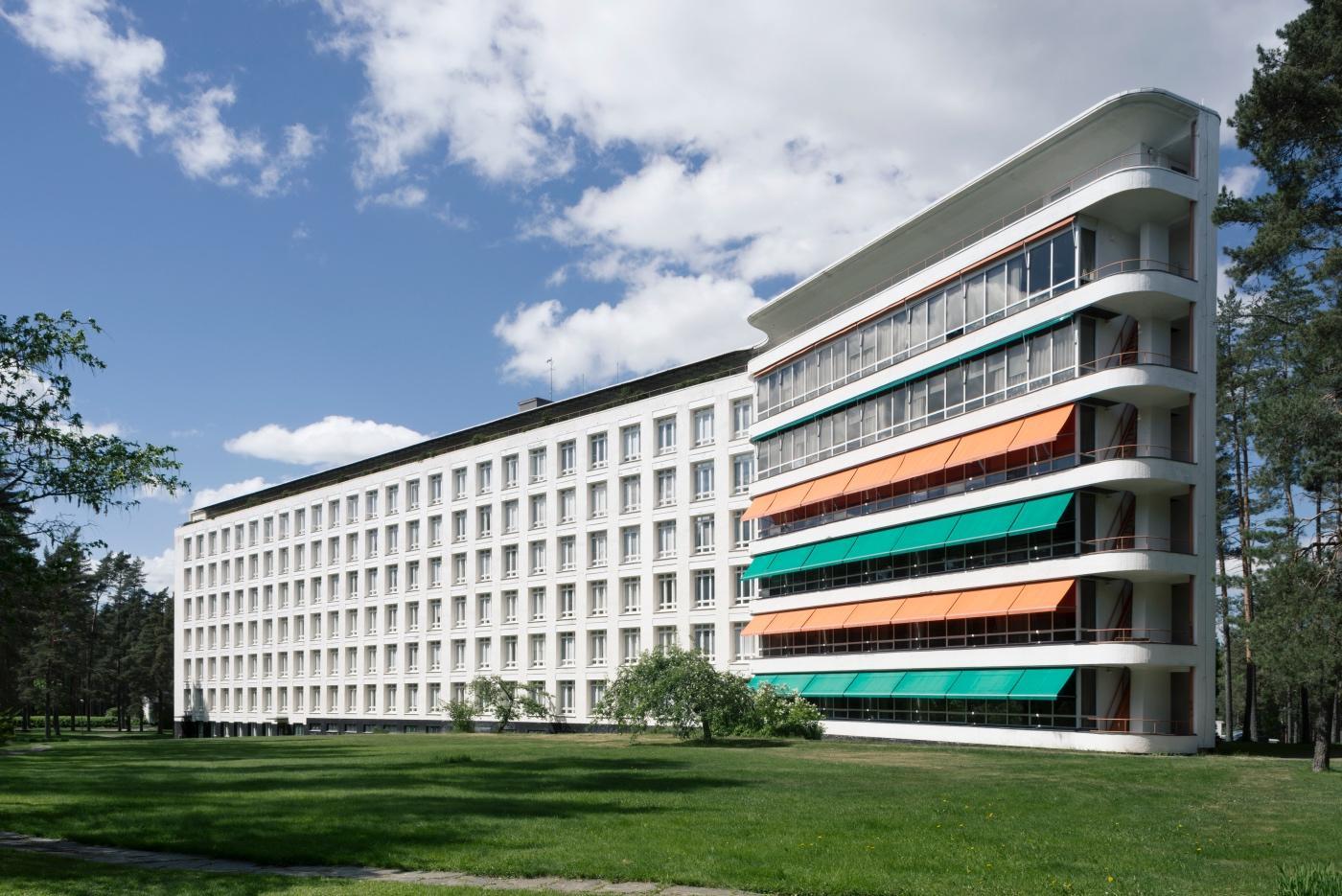Nestled in a lush pine forest outside the small Finnish town of Paimio, the Paimio Sanatorium by Alvar and Aino Aalto stands serenely as in a world of its own, a cathedral dedicated to healing. This modernist masterpiece from 1933, is considered as one of the most revolutionary buildings of its time.
The building was of key importance to the international career of architects Alvar and Aino Aalto. Together with Vyborg (Viipuri) Library, completed two years later, it gave the Aaltos an international profile. Finnish architecture was no longer merely the receiver of influences from outside.
The building, constructed on the basis of their win in an architectural competition resolved in 1929, was groundbreaking. A tuberculosis sanatorium was particularly suitable for a building which followed the tenets of the new Functionalism, where bold concrete structures and state-of-the-art building services were inseparable elements of architecture and practicality.
Aalto designed the interior colour scheme, including the yellow floors in the main staircase, the colourful walls in the corridors, the dark ceilings in the patients’ rooms and the orange balcony rails, in conjunction with the decorative artist Eino Kauria.
The entire building complex, grouped together in several parts according to use, was constructed in accordance with Aalto’s philosophy, right down to the smallest details of the furniture. As far as the loose furniture was concerned, a good many items designed specifically for the sanatorium were used, as well as standard products which were already available. According to the idea of standardisation, which belonged to the spirit of the times, these items were also planned for use elsewhere – for example, many of the light fittings ended up in the catalogue of the Taito metalworks.
The pieces of furniture became key products for Artek, which was founded in 1935. The bent plywood Paimio chair in particular has become an international design icon. On the other hand, the three-legged stool, which is the same age as the sanatorium, was not included in the first phase of the furniture supplied by the Otto Korhonen furniture works. The furniture in the patients’ rooms was dominated by tubular-steel construction, soon to be spurned by the Aaltos.
Paimio Sanatorium is considered as one of the modernist masterpieces, key site of architecture, furniture design and innovation in Finland. The Sanatorium represents humane architecture of well-being, a philosophy that continues to this day.
The site is open to public on guided tours and through various cultural activities throughout the year, highlight being the annual Spirit of Paimio – design & architecture conference. Some of the original patient rooms have been renovated into Retreat rooms, which enable visitors to stay overnight in the famous main building. This offers unique opportunity to truly experience the architectural details, and play of light, throughout the day. There is a restaurant on site that is open to public within the general opening hours of the sanatorium. Various areas in the building are also available to rent out for private functions.

